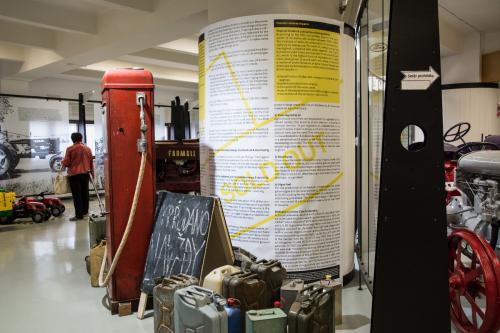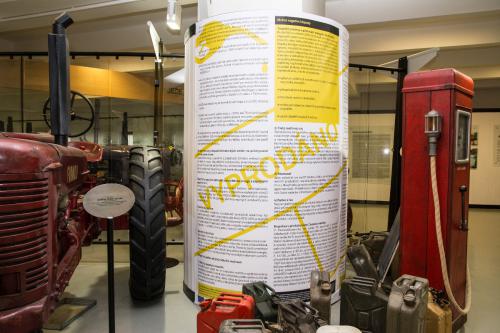How to do it step by step
1st Step:
Discussing the topic
We wanted to create an installation on problems related to fossil and renewable fuels. Therefore, we collaborated with the NGO eurosolar.cz, which provided us with a lot of useful information.
We also contacted some artists and discussed with them the possibility of creating an installation on this topic. We received a lot of very interesting proposals. This step took us one month.
2nd Step:
Collaboration with the artist
Finally, we decided to collaborate with Vladimir Turner, who is well-known for his audio-visual art and public interventions. We decided to build on the permanent exhibition on tractors, which also includes an antique oil pump. He designed an installation based around a representation of the oil crisis in the seventies: empty gas stations and pumps with no gas. It took us about three weeks to complete this step.
3rd Step:
Gathering information
The supporting NGO carried out essential research and wrote the final texts for the exhibition. This step took two weeks.
4th Step:
Negotiations with the museum
We informed the museum that we wanted to use the permanent exhibition for our installation. We were expecting some resistance to the idea, but the museum’s board was very open to our proposal and gave us the go-ahead. This step took about a week.
5th Step:
Technical preparation of the installation
During the preparation it happened, that one part of the installation expanded. We wanted to illustrate some information through the projector. So we had to create animated maps which took us seven weeks. Finally one of the simplest installation in our opinion changed into one of the most complicated.
6th Step:
Installing it in the museum
Due to the technical complexity involved, the artist, the technicians and the museum employees needed to work closely together, but sometimes it was difficult to coordinate them all. That was the reason why the implementation took three weeks.





















